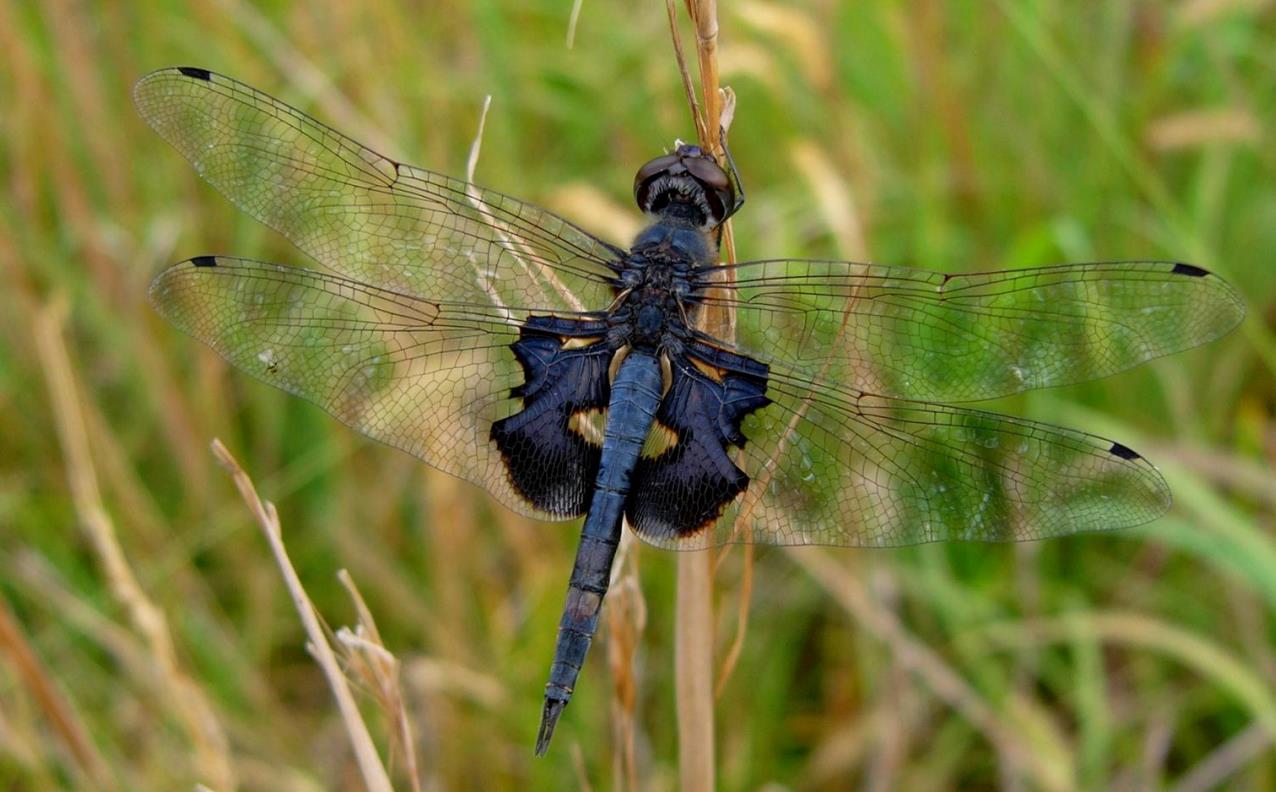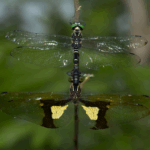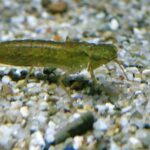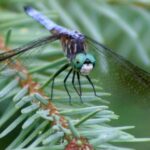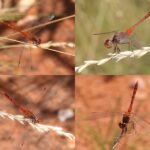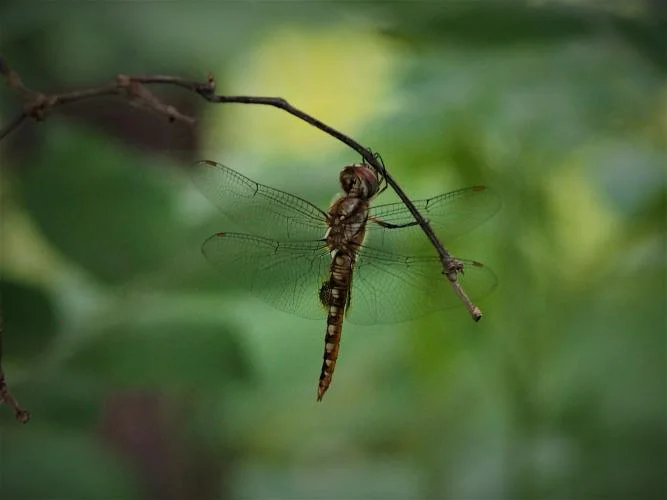
The black saddlebags (Tramea lacerata) is a species of skimmer dragonfly found throughout North America. It has distinctive wings with characteristic black blotches at their proximal ends, which make the dragonfly look as though it is wearing saddlebags.
The black saddlebags is a relatively large dragonfly at about 5 centimetres (2 in) in length. The body is thin and black, and the female may have lighter spotting or mottling dorsally. The head is much wider than the rest of the body and is dark brown in color.The insect can be found at bodies of stagnant water, such as ponds and ditches.
Scientific Name:Tramea lacerata
Family:Libellulidae (skimmers) in the order Odonata (dragonflies and damselflies)
Description:The black saddlebags is a dragonfly with memorable markings. Two dark blotches on each hindwing, positioned close to the body, look like saddlebags. This skimmer species typically stays in flight and rarely perches for long.
Learn more about this and other dragonflies on their group page.
Other Common Names:Saddlebags SkimmerSizeLength: 1½–2¼ inches.
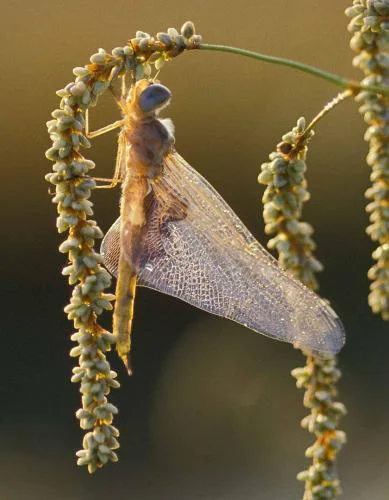
Notes from the field – Black Saddlebags:This high flying skimmer behaves more like amember of the emerald family, spending muchof its time gliding and circling over sports fields,parking lots, meadows and marshlands. Go to asunny soccer field on a July or August afternoon, and look up. 4PM-7PM appears to be asort of peak for them, as far as open-countryhunting. It’s a great time to watch saddlebags,gliders, Clamp-tipped Emeralds, Prince Baskettails and Common Green Darners in mixedspecies swarms, as they end their afternoonwith a gnat snack. Earlier in the day you canwatch this species’ characteristic bouncy flightas it patrols much lower, along marsh and pondshores, looking for mates and rivals.
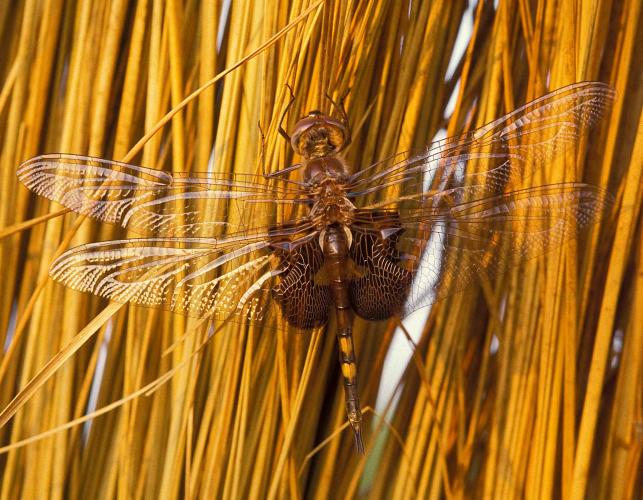
Distinguishing Characteristics:The black saddlebags is easily identified by its mostly black coloration with some white dorsal abdominal spots and black wing patterns. The length of the body varies from 2.0 to 2.2 inches. The hindwings are 1/4 covered with a black band, near the body. Females and juvenile males have yellow-brown faces and large white dorsal spots on most of the abdomen. The face becomes black and the abdominal spots darken in males. One of the abdominal spots persists the longest near the middle of the abdomen. Some people have commented that the hindwing bands resemble theater comedy masks facing each other across the abdomen.
Description of Habitat/Range:Found throughout United States and southernmost Canada, the black saddlebags prefers ponds, lakes, and ditches without fish, including temporary ponds. It occurs fairly commonly throughout the southern two-thirds of Wisconsin.
Flight Season:In Wisconsin, the flight season extends from late-May to mid-October with northbound migrants arriving in late spring and early summer and their offspring emerging and flying south starting in August.
Size:Length 4.7-5.5 cm
Identification
Large dark “saddlebags” on hindwings distinctive. Could be confused with Carolina or Red Saddlebags in poor light. Flies constantly, often gliding, perches infrequently.
Range:Includes most of North America, absent from upper midwest.
Habitat:Near ponds, other bodies of water. Widespread in migration.
Season:Spring into fall in temperate areas, all year in subtropics.
Food:Predatory on flying insects
Life Cycle:Breeds in fish-free temporary or permanent ponds, ditches. (See account for genus Tramea on oviposition.) Partially migratory–some move north to breed and the next generation flies south. May migrate in swarms.
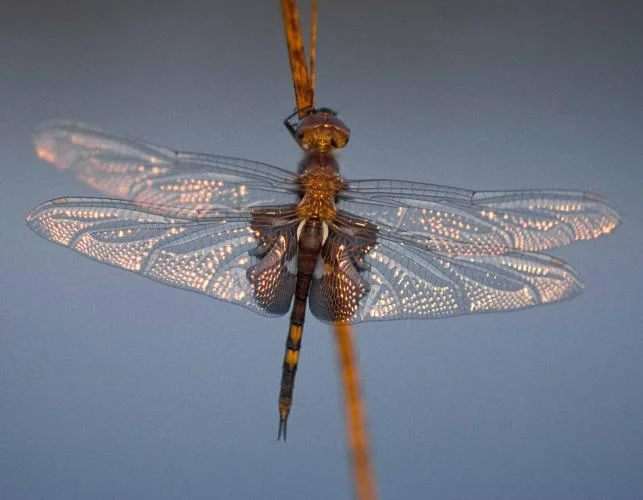
The first time I saw a Black Saddlebags upclose, I was surprised by the beauty of theirinkblot-like wing patches. Deep, iridescentpurple, these markings appear almost liquid intheir richness. I imagined how many peoplemiss this sight, as they walk across a parkinglot, with saddlebags flying high and unnoticedabove them. How lucky was I to come acrossone perched for the evening in a tall grassmeadow. Dusk and dawn are just about theonly times you’ll see this species sitting still,long enough to admire those beautiful wings.
Even from a distance, this species’ rear wingpatches are diagnostic. This one perches on thetip of a tree sapling in one of the large meadowsof Huntley Meadows Park, taking an uncharacteristic break during hours of high-flying hunting onan August afternoon. One of several dragonflyspecies that migrate every late summer and fall,we know very little about why.

